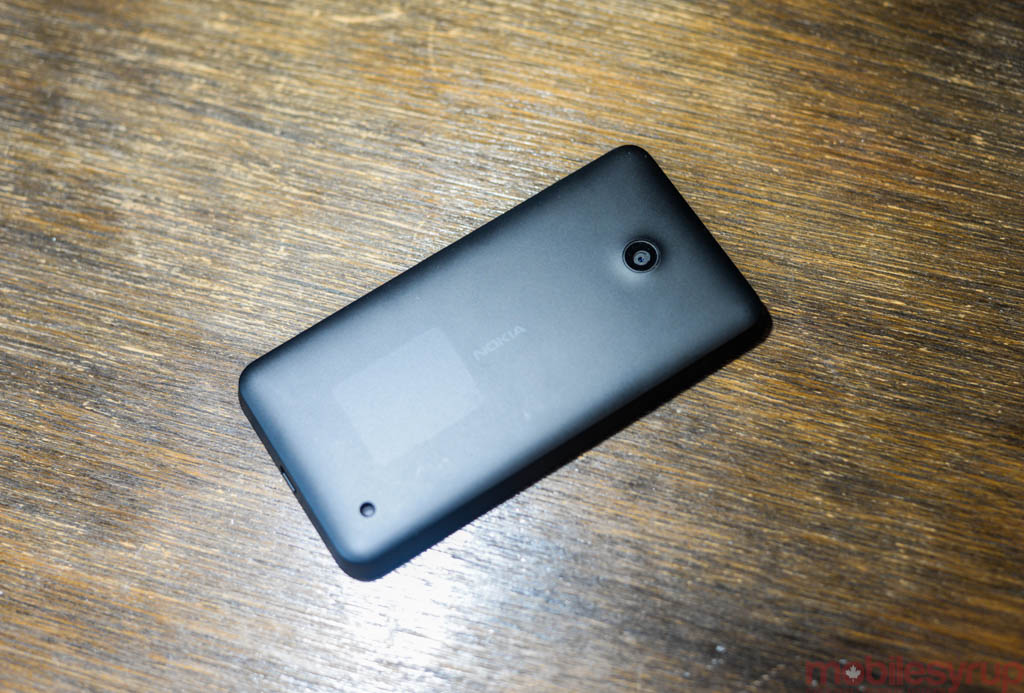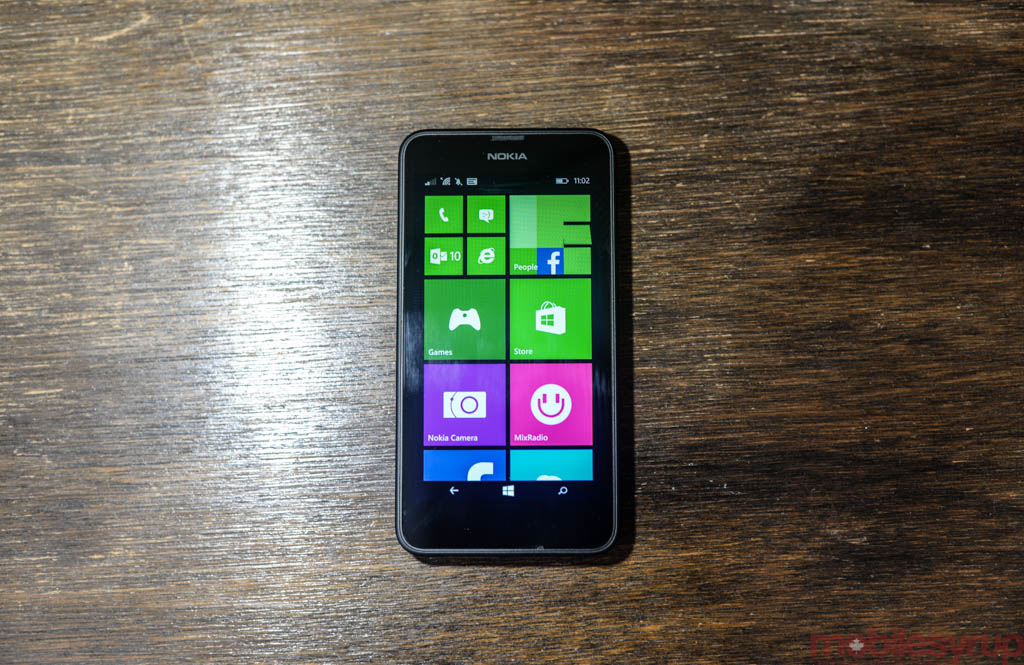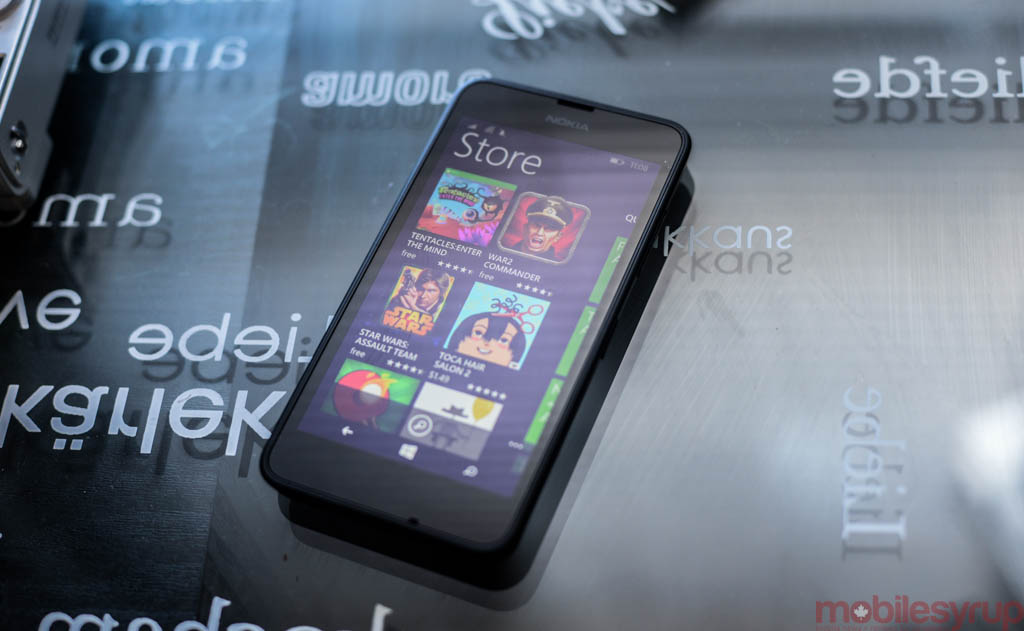
Increasingly, low-cost Nokia Lumia smartphones are representing, at least in Canada, the majority of our exposure to Windows Phone. With the Lumia 635, the company’s first Windows Phone 8.1 product, we have a decent landmark with which to view Microsoft’s overarching platform strategy.
A $150-$200 device depending on the carrier, the Lumia 635 goes up against the Moto E, Moto G, Alcatel OneTouch Idol 2 S and a few other low-cost Android phones. While the software experience is fluid and the chassis compact, does it offer enough to turn heads?
Specs
- Windows Phone 8.1
- 4.5-inch 854×480 pixel IPS display
- 1.2Ghz quad-core Snapdragon 400 SoC w/ Adreno 305 GPU
- 512MB RAM / 8GB internal storage (expandable via microSD)
- 5MP rear camera / 720p video capture
- 1830mAh battery
- 129.5 mm x 66.7 mm x 9.2 mm
- 134 grams
- LTE 1900MHz / 700MHz / 1700/2100 (AWS) / 2600MHz
- Available at Rogers, Fido, Koodo, Telus
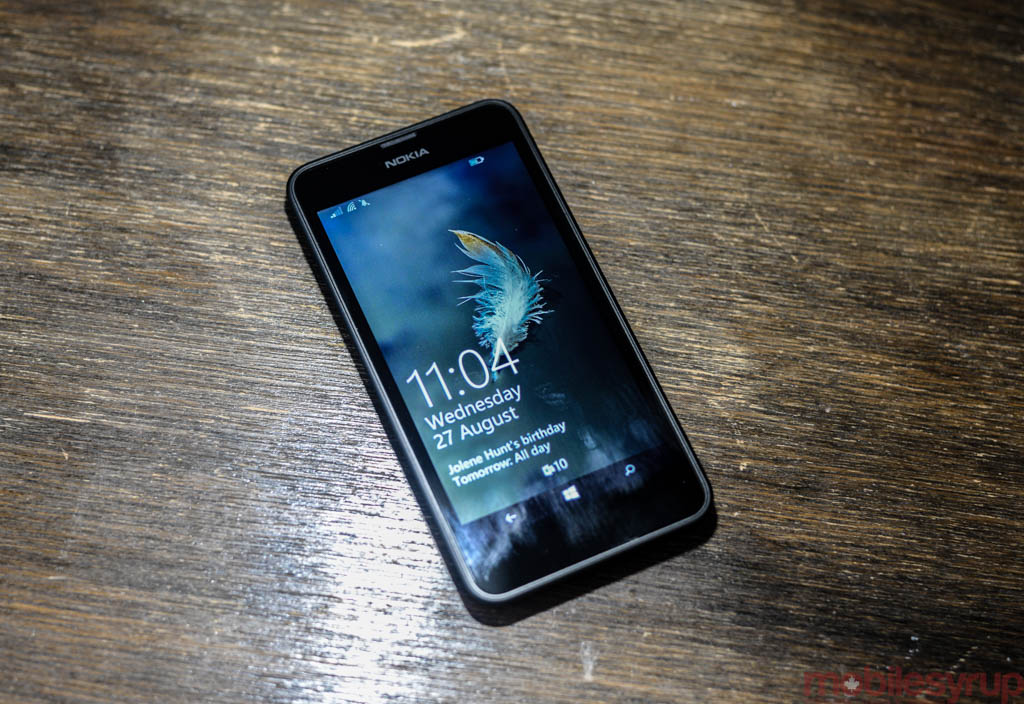
What Works
The Lumia 635 is about as utilitarian as a smartphone comes these days: a characterless black rectangle with nothing to distinguish it from others of its ilk but a Nokia logo on its removable back cover, it is a far cry from garnering the often-emotional connection one has to the company’s design roots.
But its rudimentary design and passé hardware specs belie significant improvements to the software in Windows Phone 8.1. Inside, a quad-core Snapdragon 400 processor and 512MB of memory power what is the first major update to Windows Phone since late 2012.
Windows Phone 8.1 finally adds a notification center to Microsoft’s mobile OS, and unifies many of the development tools with the larger Windows RT platform, making it easier to design apps and games for devices both big and small, similar to the way apps for iPhone and iPad share a codebase.
Like all Windows Phone-powered devices, the Lumia 635 feels snappy in and around the home screen and apps. Being limited to 512MB RAM does, on paper, seem like a significant detriment, but Android this is not: Microsoft has set strict limits on how much memory apps can use, both in the foreground and behind the scenes, ensuring that slowdown is kept to a minimum.
While Cortana, Microsoft’s friendly new voice assistant and Windows Phone 8.1’s most noteworthy feature, is not explicitly supported in this version (A Canadian-optimized version will come in a future update) there are many other small improvements that are worth noting. For the consumer, an improved multitasking experience ensures that the apps you opened are the ones shown in the switcher, and quick settings, activated just above the first notifications in Action Center, make digging for WiFi or Bluetooth a thing of the past.
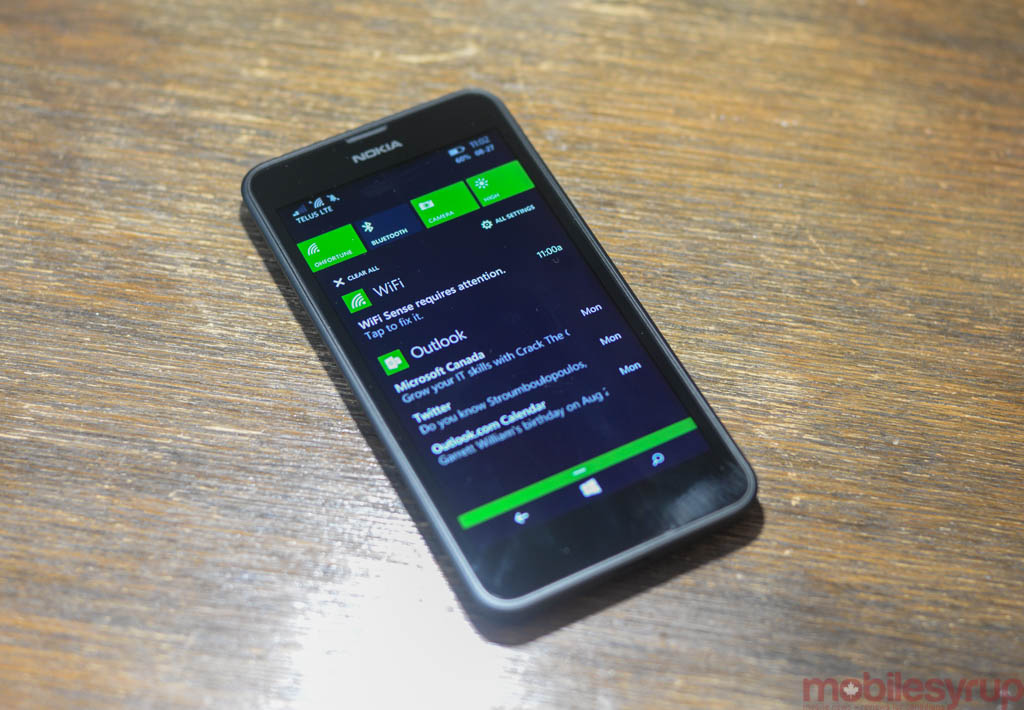
Indeed, Action Center takes the best of both Android’s and iOS’s respective solutions and melds them together. Like on Android, acknowledging a notification is an easy as tapping on it or swiping it away; unlike Android, notifications are always grouped and dismissed together, avoiding the occasional frustration of having to “Clear All” just to make the feed more manageable. Unfortunately, Action Center does not support actionable notifications such as liking a Facebook post or quickly replying to a text; iOS is set to add that functionality on a per-app basis later this year, and Android has had a similar implementation since version 4.1.
Windows Phone has always had a good keyboard, but Word Flow adds the ability to swipe through your words similar to Swype or SwiftKey. It’s still a great keyboard, but users may find it difficult to readjust their thumbs to miss the narrow on-screen buttons that have replaced Windows Phone’s traditional capacitive back, home and search functions.
On the business side, Windows Phone 8.1 now supports VPNs and has improved CalDAV and CardDAV support, making it relatively easy to interface with Google’s services if necessary. Still, Microsoft’s own services take precedence here, and if you’re entrenched in the ecosystem adding a Live account for email, contacts, calendar, Office 365 and OneDrive synching is extremely simple. Since there’s no first-party Dropbox app for Windows Phone, and Google doesn’t appear to be laboring too hard to produce apps for its own services on Microsoft’s OS, OneDrive is the clear cloud storage leader for cross-platform users. Microsoft has developed capable and platform-specific apps for iOS and Android alike.
On the games side, Microsoft recently worked with developers to optimize many titles for 512MB devices. Simple platform and puzzle games are assured to work, while more graphics-intensive choices are likely limited to devices, like the Lumia 920, with 1GB of RAM or more.
We tested the TELUS version of the Lumia 635 and came away impressed with its battery life, call quality and data speeds. The device supports LTE speeds up to 75Mbps in the downlink, and we averaged roughly 7-10Mbps in most parts of Toronto. As for uptime, we’ve never had difficulty eking a full day of use from a Windows Phone device, and the Lumia 635 was no exception.
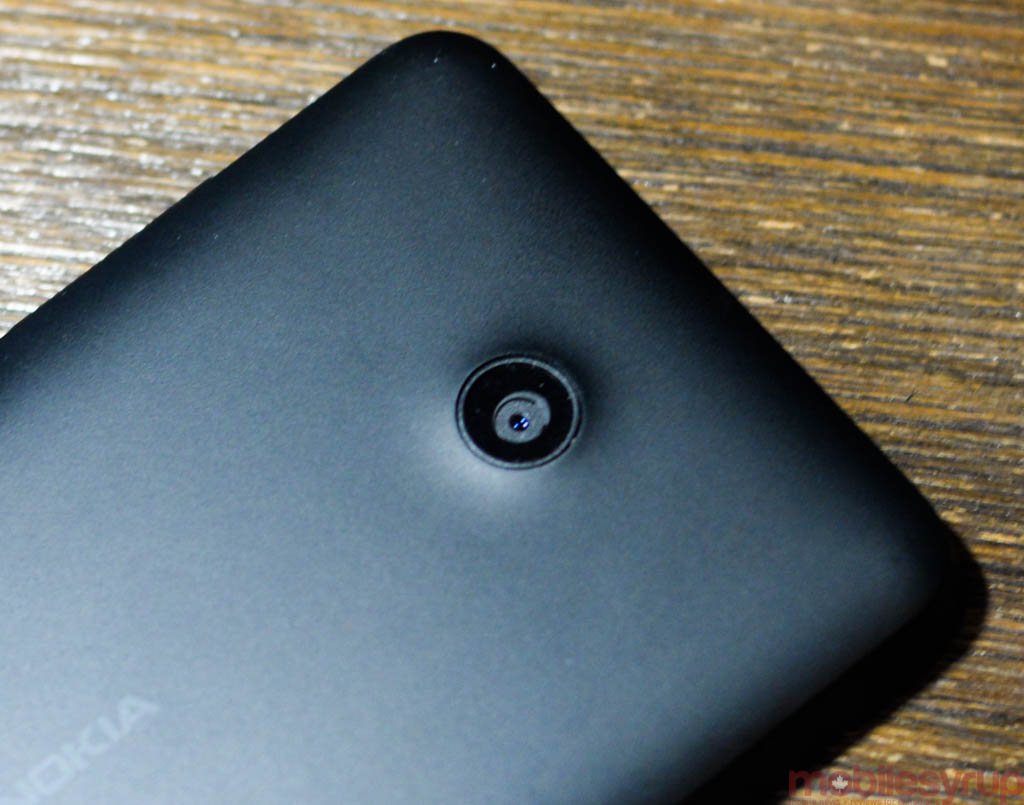
What Needs Work
The biggest criticism of Windows Phone is still its spammy, often-frustrating app store. We say this every time, but even as the developer ice thaws and Microsoft attracts well-known parties to the table, older apps are left to flounder. Using Instagram as an example of an app that seems to have been built to check a box off Microsoft’s list, it is behind both iOS and Android in functionality and design.
With Windows Phone, you must understand and acknowledge that the choice for apps will be significantly lower, and of generally lower quality. That is not always the case – Microsoft’s own, like Skype, OneDrive, and the many Bing apps, not to mention Nokia’s HERE Maps, Drive+ and Transit — are superlative, and examples of what is possible with the platform.
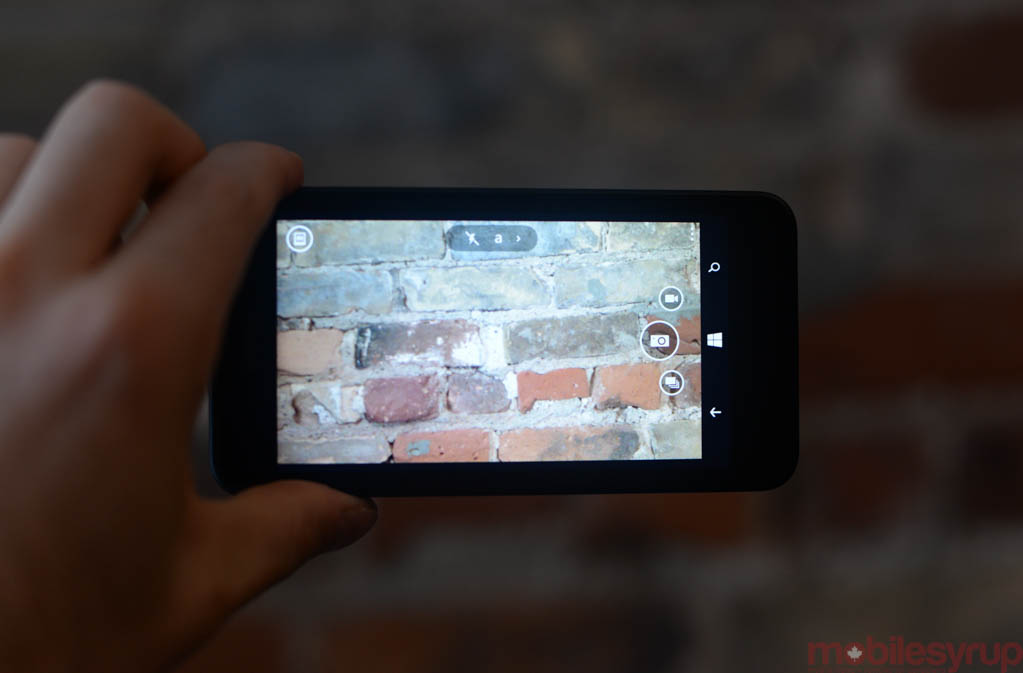
On a device level, the Lumia 635’s camera is pretty bad. The 1/4″ 5MP sensor is relatively tiny, fetching washed-out daylight scenes and incomprehensible low-light shots. The device also lacks a flash to make up for the poor sensor, and no front-facing camera means selfies will have to be taken blind (or, hark, not at all!).
The display’s 854×480 pixel resolution is underwhelming, though Nokia’s excellent pedigree shines through, even at 218 pixels per inch. Windows Phone’s colourful palette shines through on the Lumia 635’s IPS panel, which has great colour saturation, enviable contrast levels and decent brightness for a sub-$200 product. Colours themselves, however, lack accuracy: reds have a pinkish tint, and greens are flat and muted.
MobileSyrup may earn a commission from purchases made via our links, which helps fund the journalism we provide free on our website. These links do not influence our editorial content. Support us here.

